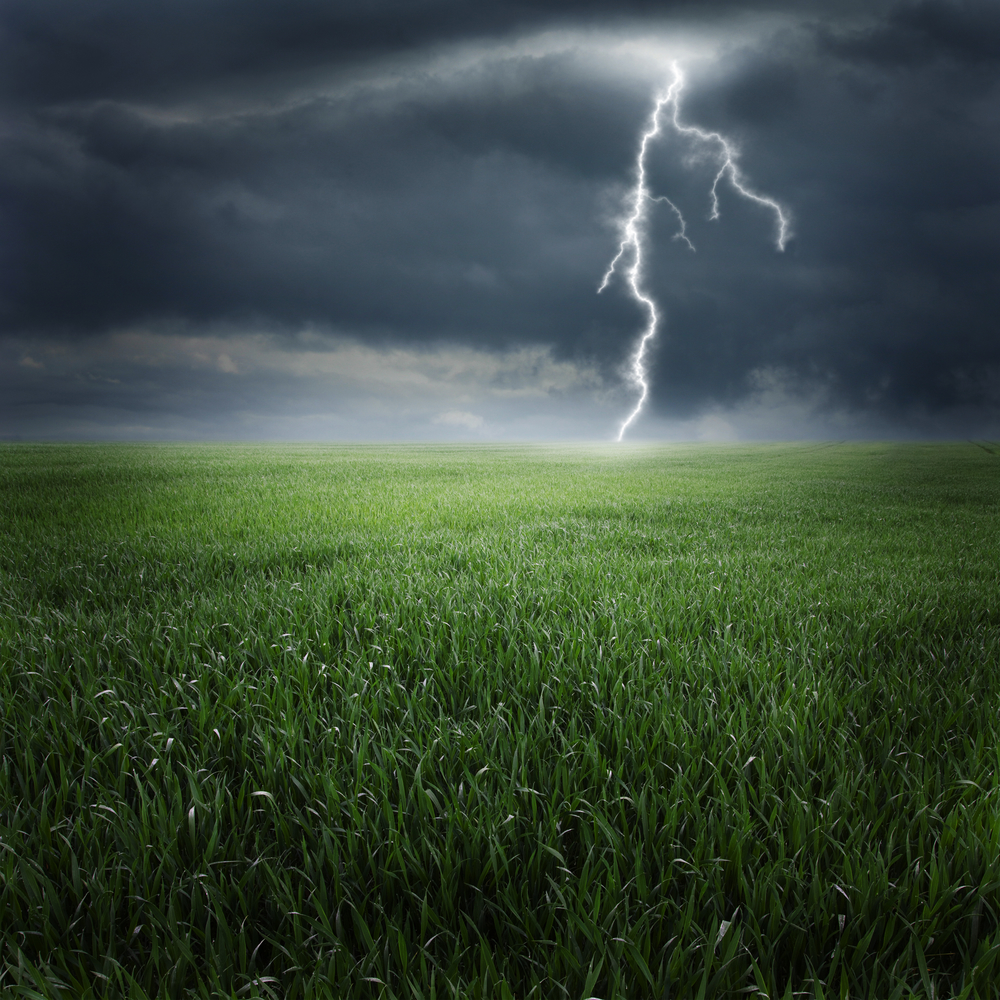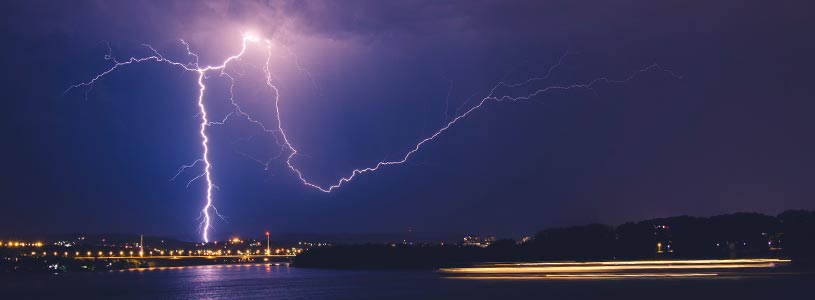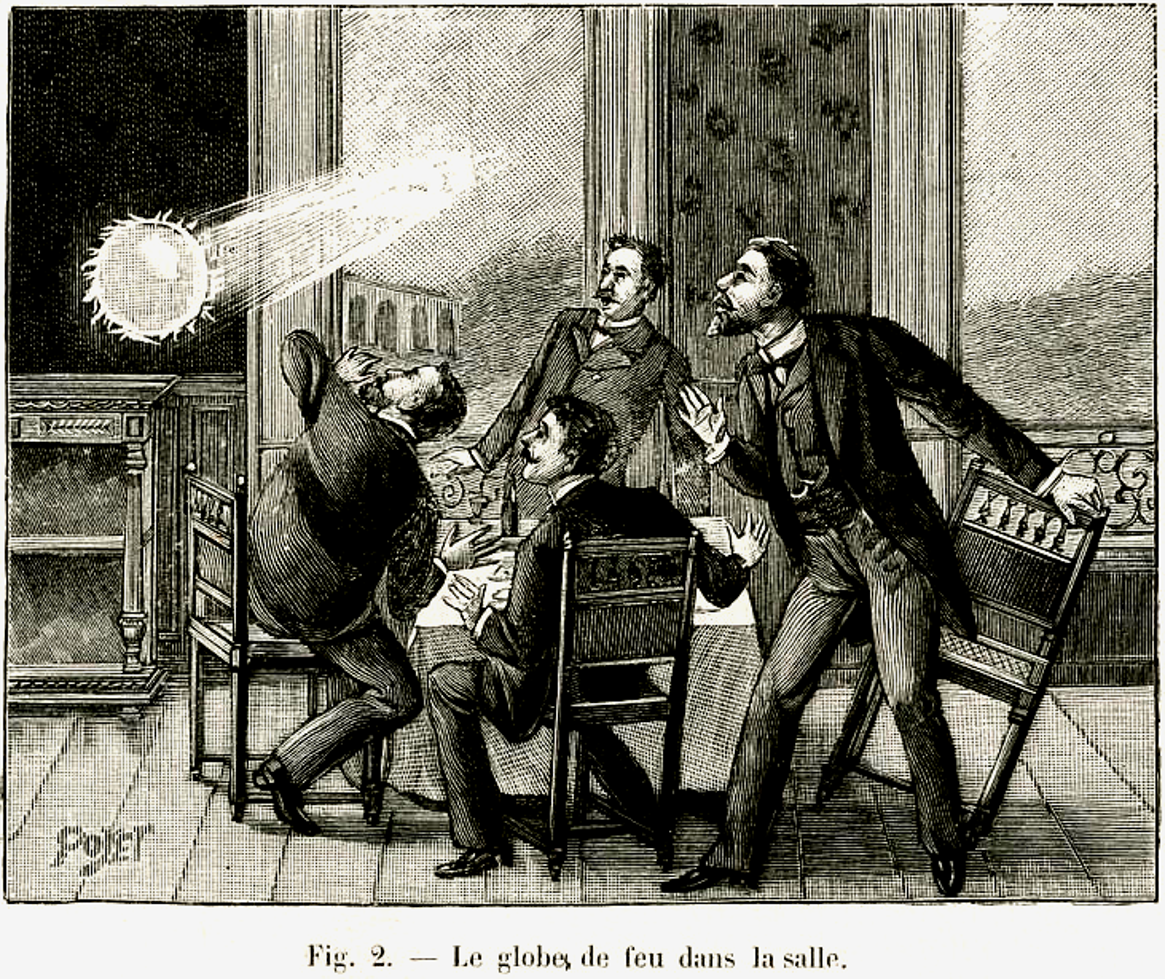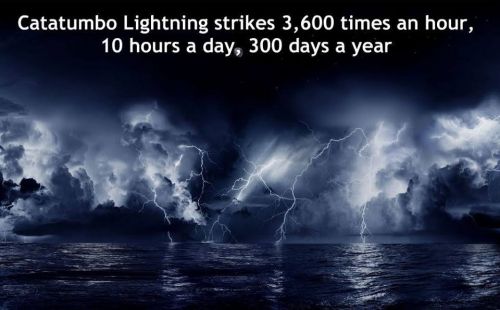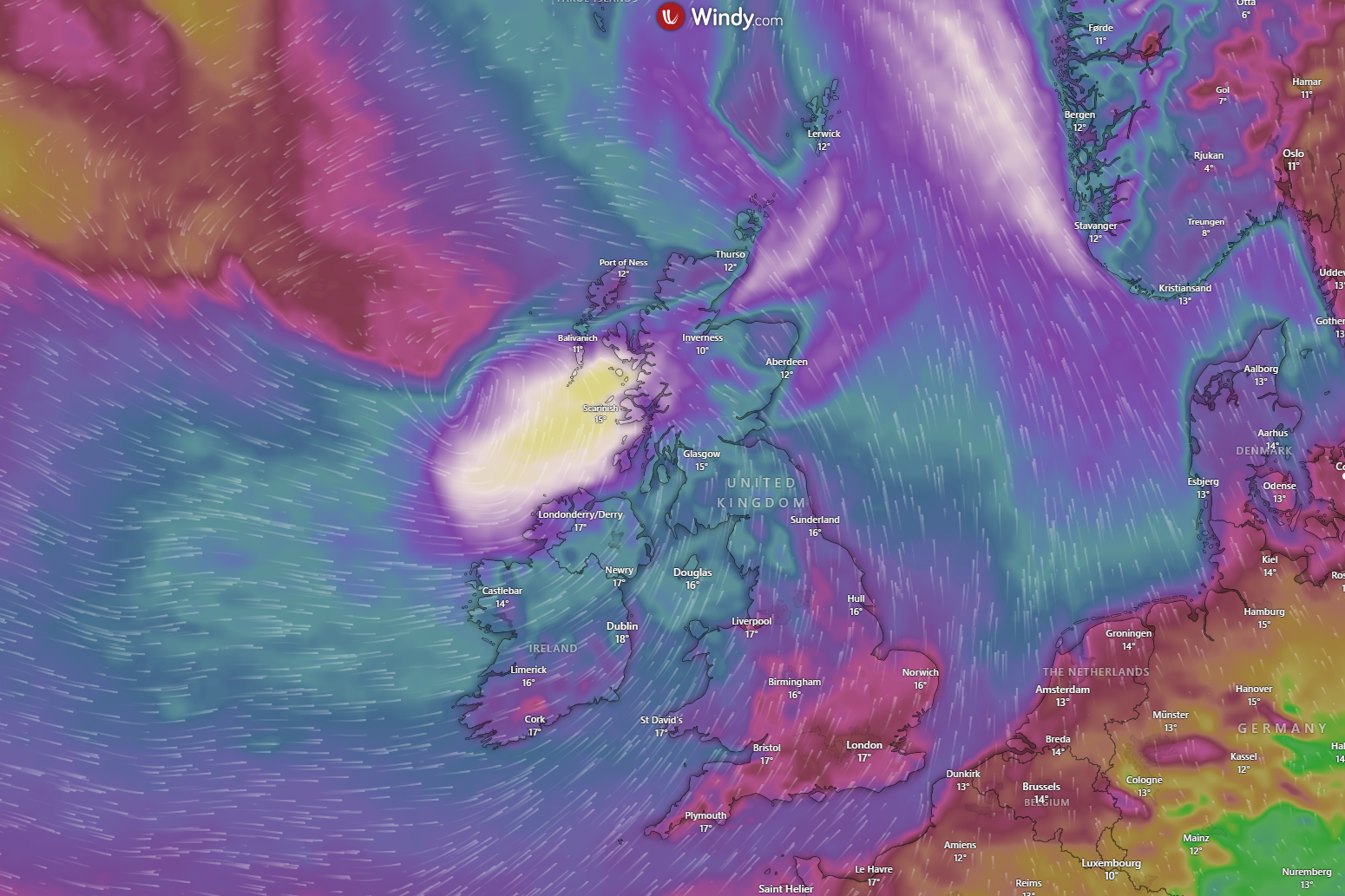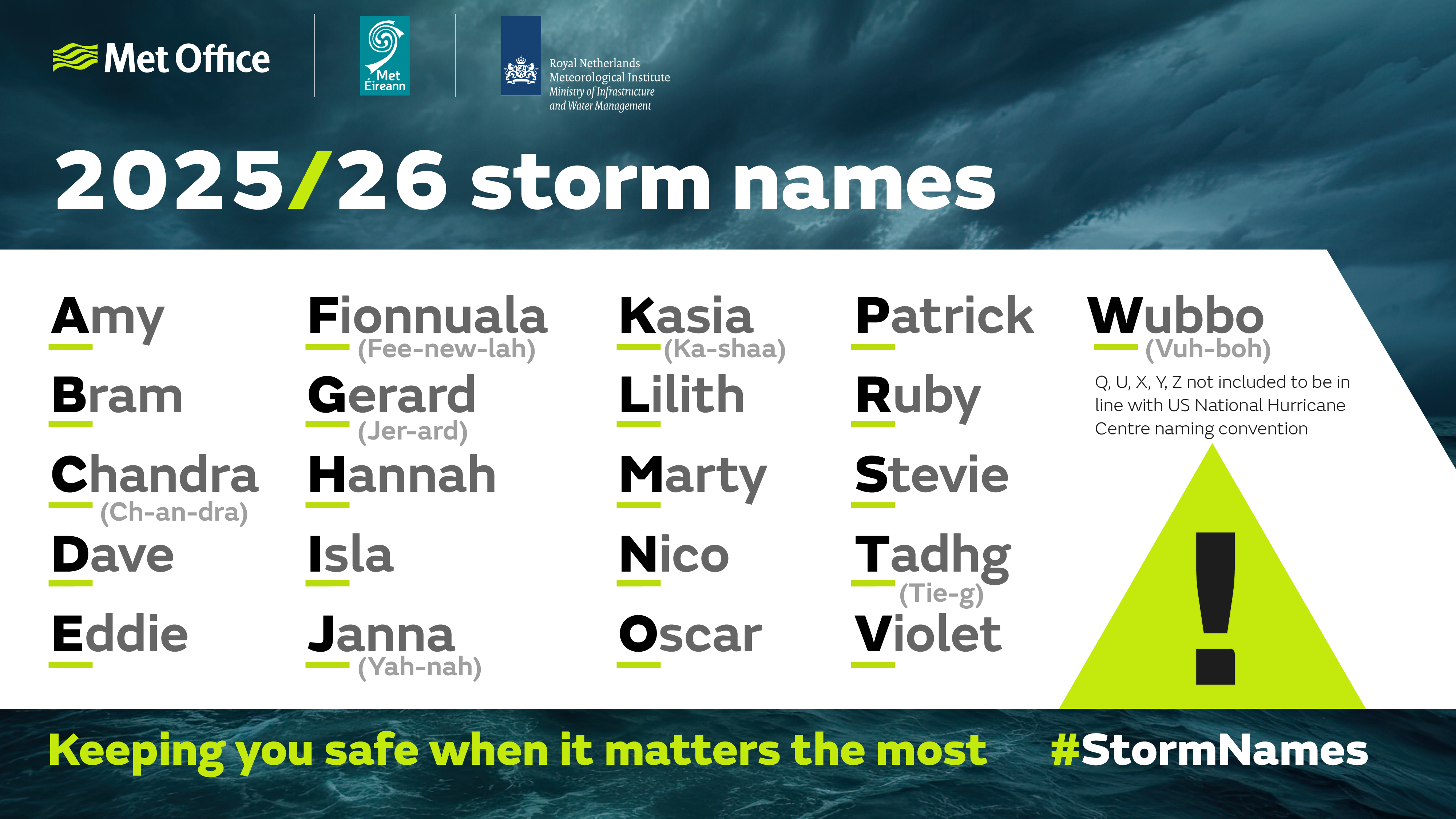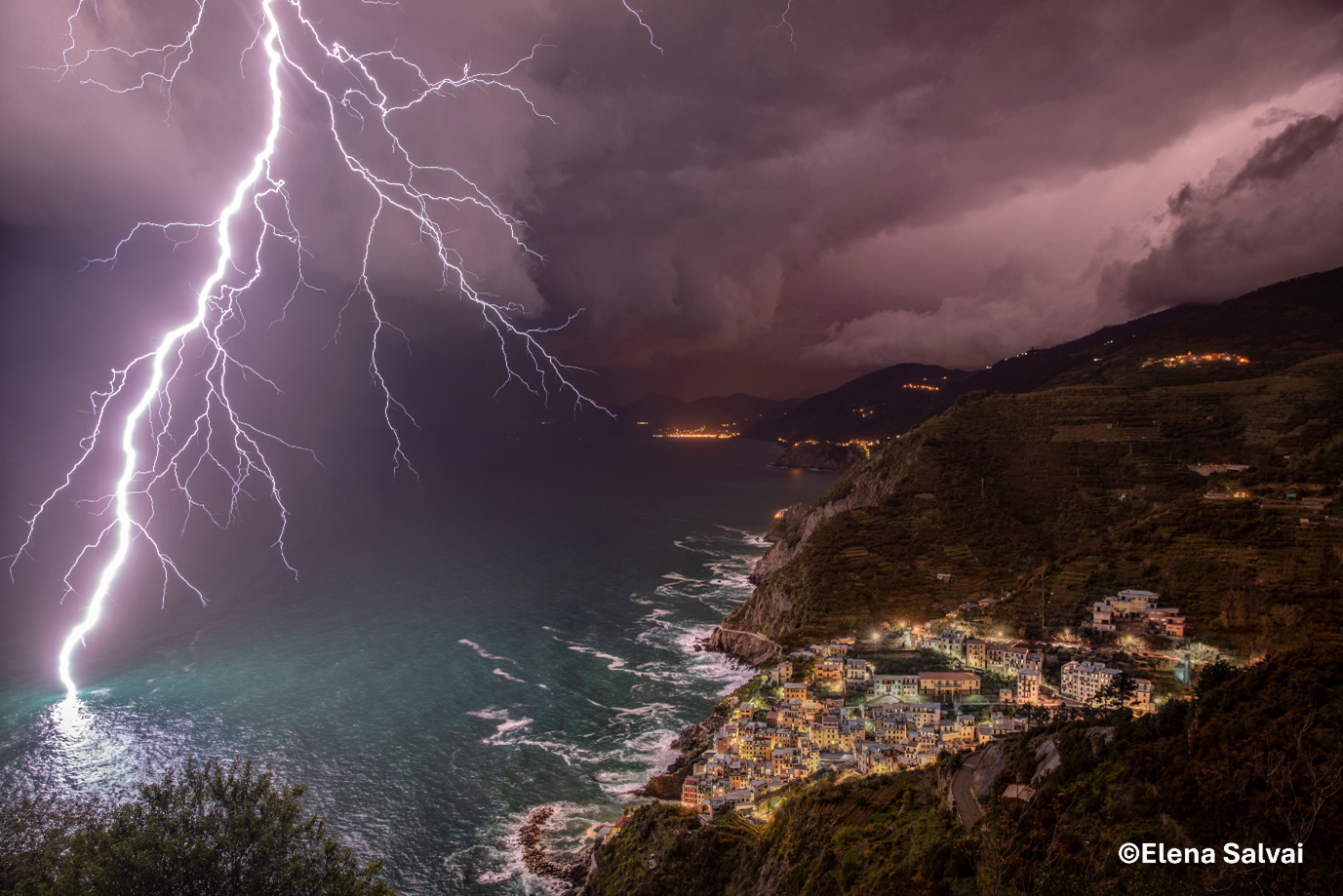

What happens when lightning strikes the ocean?
What is lightning?
Lightning is a giant spark that occurs within a cloud, between clouds or between the cloud and the ground. It's caused by a buildup of electrical charge within storm clouds, or between clouds and the ground, that eventually overcomes the insulating capacity of the air.
A single lightning bolt can unleash around 300 million volts and 30,000 amps of current, compared to just 230 volts and 13 amps from a UK household socket. When lightning strikes, the energy released heats the surrounding air to over 30,000 °C, causing rapid expansion that produces the loud shockwave we know as thunder.
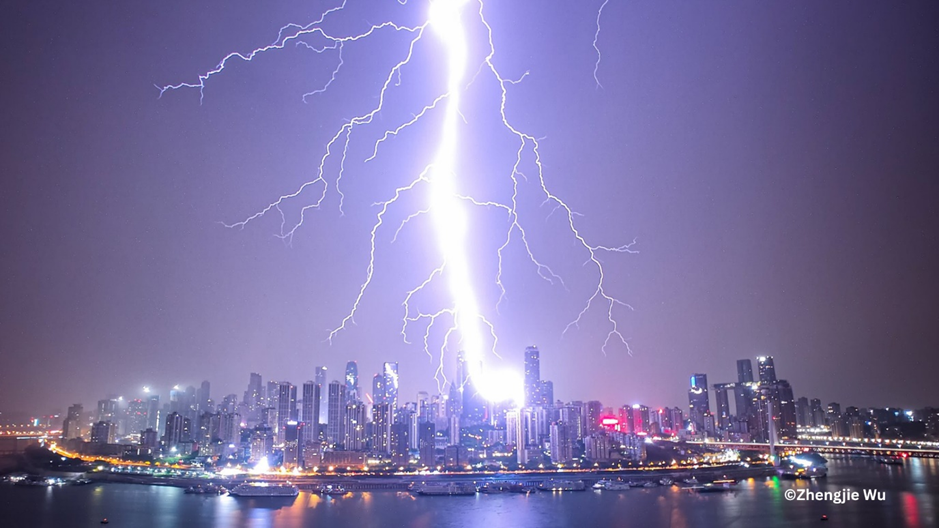
Why does lightning form?
Inside a thunder clouds, strong updraughts hurl around the ice crystals and water droplets that make up the cloud. During the cloud’s lifetime, collisions occur between smaller ice crystals and larger graupel (a type of soft hail). Over time, billions of these collisions occur, and each collision transfers tiny amounts of charge between them. This is the same process that creates static electricity when you rub a balloon on your hair.
As the lighter ice crystals are pushed by the updraught to the top of the cloud, the heavier graupel tends to remain near the lower levels of the cloud, and this creates a strong charge difference between the top of the cloud, the base of the cloud, and the ground. Typically, the negative charges are on the bottom of the thundercloud, and the positive charges are on the top.
The air normally acts as an insulator, but once the electric field exceeds about 3 million volts per metre, it breaks down, triggering a discharge we see as lightning.
A massive electrical current, or lightning bolt, is released, equalising the charge difference in a violent burst of energy.
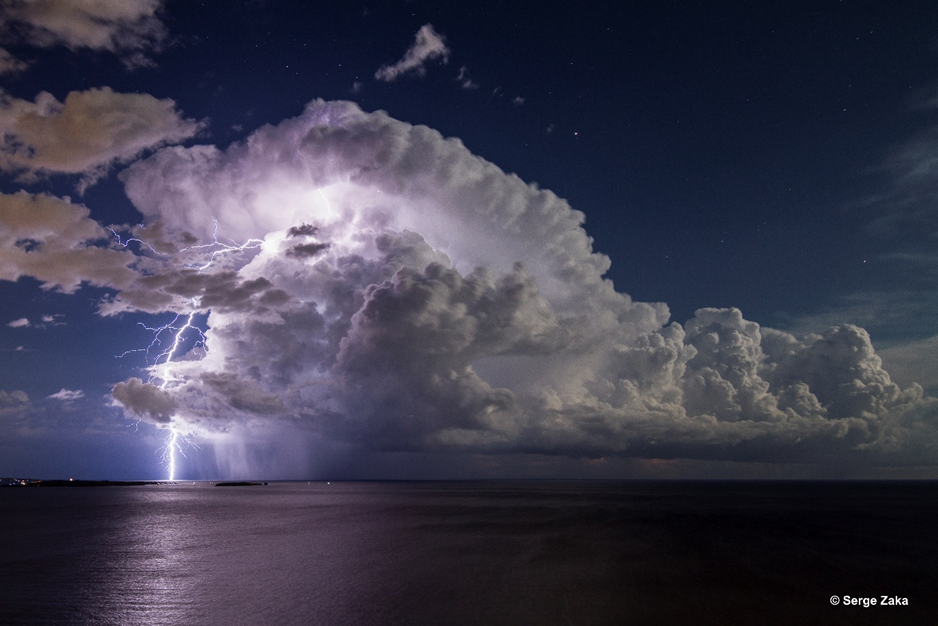
Mega flashes and Super bolts
Not all lightning behaves the same. Some bolts are bigger, farther and brighter than any normal strike. These are the atmospheric record-breakers: megaflashes and superbolts.
Megaflashes are lightning bolts that stretch horizontally for hundreds of kilometres across the sky. They occur in vast storm systems called mesoscale convective systems, where the cloud structure allows charge to travel long distances. These enormous events are often too large to see from the ground, but they light up entire regions in satellite data.

©NOAA
The current world record for the longest lightning flash is 829 km (515 miles), spanning multiple US states was recently officially recognised as the longest single flash ever detected.
Superbolts are exceptionally powerful and bright lightning discharges, sometimes up to 1,000 times more energetic than a standard bolt. Superbolts are brighter and more intense than normal lightning bolts and can appear dazzlingly bright even from hundreds of kilometres away. Researchers have found that super bolts are also much more likely to be detected over the ocean.
Why is lightning over the ocean more intense?
Despite covering over 70% of the planet, the ocean sees far less lightning than land. Researchers have found that around 90% of all lightning activity occurs over land. This is because land heats and cools more quickly than water, creating more convective conditions that favour storm formation.
But when lightning does strike the sea, it can be spectacular. Lightning over the ocean is often more intense and visually dramatic than over land, and there’s a good reason why:
Salt water is an excellent conductor, and that conductivity comes from the ions formed when salt dissolves in water. Common table salt (NaCl) separates into positively charged sodium ions (Na⁺) and negatively charged chloride ions (Cl⁻). These ions move in opposite directions under the influence of an electric field, enabling a strong, efficient flow of current.
Under a thundercloud, these charged particles can be rearranged in the sea surface even before lightning strikes. The negative charge at the base of the cloud repels negatively charged Cl⁻ ions in the water and attracts Na⁺ ions, creating a vast, subtle rearrangement of charges on the ocean’s surface, sometimes over areas as wide as the storm cloud itself.
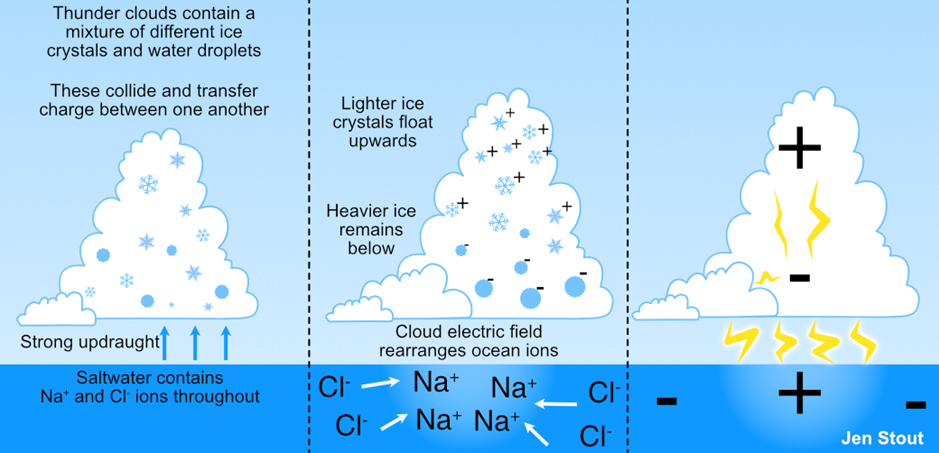
When lightning strikes the ocean, the discharge spreads mostly across the surface, where the electric field is strongest and the positive ion concentration highest. This produces a larger, more brilliant flash than you typically see over land, because the conductivity is higher, allowing for more efficient transfer of energy and a larger current.
How far does the current travel underwater (and are fish safe)?
When lightning hits the ocean, the electrical energy spreads rapidly across the surface, not deep into the water. Salt water’s high conductivity allows the current to disperse quickly and horizontally in all directions, limiting its penetration depth.
This is good news for marine life. Most sea creatures live well below the surface, in water that’s not significantly affected by the strike. While fish swimming within a few metres of the surface might be harmed or killed, those deeper down are unlikely to be affected at all.
In contrast, lightning strikes in smaller bodies of water, like lakes, can be more dangerous for aquatic life. The confined space offers less room for the energy to dissipate, potentially affecting a greater proportion of the lake's inhabitants.
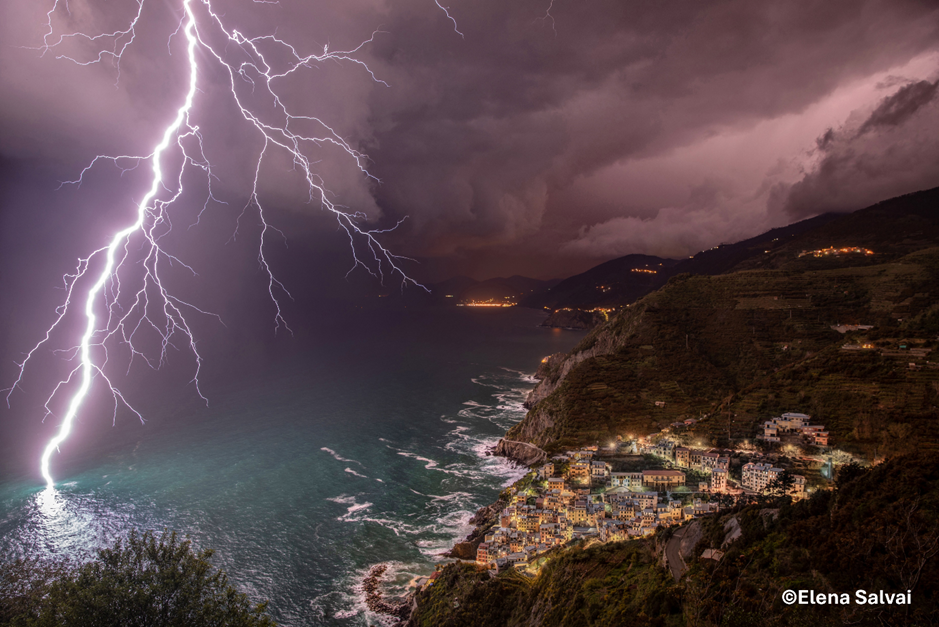
Where does the energy go?
Lightning releases energy in many forms:
- Heat: Air around the bolt can reach temperatures of 30,000°C, hotter than the surface of the sun.
- Light: The brilliant flash of lightning illuminates the surrounding area.
- Sound: Thunder is caused by the rapid expansion of air around the bolt.
- Kinetic energy: Shockwaves and vibrations can ripple through air and water.
Some electrical charge also disperses into the ocean surface but is quickly neutralised as the ions redistribute in the water.
Why does lightning target tall ships?
Lightning seeks the path of least resistance to the ground. On the open sea, a ship’s mast becomes the tallest-and often only-conductor. That’s why vessels are equipped with lightning protection systems that safely channel the energy into the water, sparing the crew and electronics.
Are ships safe during lightning storms?
Generally, yes. Large ships act like Faraday cages, distributing the electrical charge around the exterior and protecting those inside. Smaller boats are more vulnerable, especially if they lack proper grounding. Mariners are trained to avoid open decks, disconnect electronics, and lower antennas during storms.
Sky vs Sea: Who wins?
Lightning storms might be more striking, but the ocean provides much of the energy that fuels them. Warm seawater powers tropical storms and hurricanes. As these systems intensify, the ocean and atmosphere collaborate in a powerful feedback loop, driving lightning, wind and rain.
So, who wins: the sky or the sea? It’s not a contest. They’re partners in a powerful, dynamic, and sometimes dangerous exchange of energy.
Want to know more about lightning? MetMatters has more electrifying reads to spark your interest...
About the author
Jen Stout was the Science Engagement Officer at the Royal Meteorological Society

